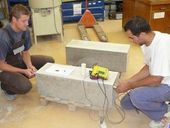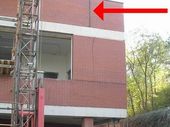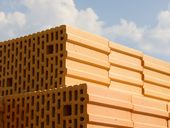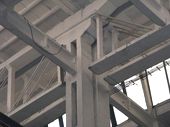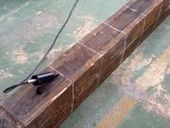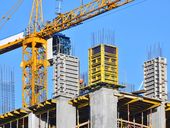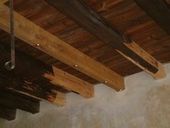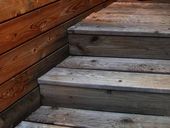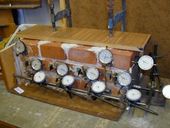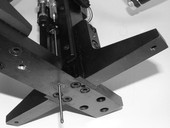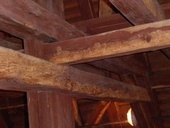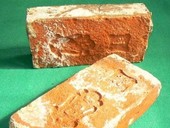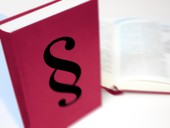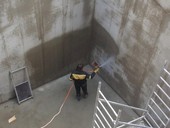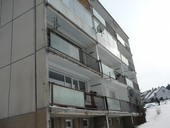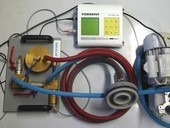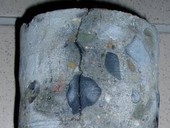The article deals with the questions of concrete homogeneity, above all with possibilities how to verify this characteristic. We manufactured for this experiment two concrete blocks with dimensions 300×300×900 mm from concrete C 20/25 and then we determined their homogeneity using non-destructive and destructive testing methods. It is only a small part of experimental research, but it is possible to generalize research results and conclusions. We verified the concrete homogeneity in real structure using the ultrasonic impulse method – on columns of monolithic frame of car shelter.
Archiv článků od 10.12.2012 do 29.4.2013
Assessors often encounter objects with uncertain structural system. These buildings are designed with difficulty and in its operation they may behave differently than expected. Good design and implementation are, in the case of long-term behaviour of structures, essential. The article deals with the basic principles of proper design and its assessment.
The basic document for the area of construction products was until the April 2011 Council Directive 89/106/EEC (CPD). On 4st. April 2011 was published in the OJ EU REGULATION OF THE EUROPEAN PARLIAMENT AND COUNCIL No 305/2011 which defines harmonized conditions for the placing of construction products to EU market and cancels Council Directive 89/106/EEC.
This paper describes an investigation of historical timber members of roof structure at Masaryk railway station in Prague. In the paper is also presented an experiment, which deals with the influence of mechanical damage to timber members in the interpretation of the results of non-destructive measurement.
Information and access to technical standards plays very important role, when construction products are placed on the EU market. For the purpose of it can be very effective to use web of Czech office for standards, metrology and testing. Basic data for web are prepared by Institute for testing and certification. ČSN standard references placed in this web are connected with ÚNMZ web service „CSN on-line” and makes possible users of this service directly access to full texts.
Wood is an organic material and therefore often considered to have a short lifetime. However, in the past, people did not distinguish between durability of wood and durability of masonry, proof of which is the existence of constructions that combine the use of both. In fact, the lifetime of wood can be high if specific rules are followed when designing the construction.
This paper presents an analysis of the behaviour of wood when using the diagnostic tool for "in-situ" assessment of wood based on the principle of mechanical resistance to penetration tool (mandrel) into the wood. The aim was to describe the degree of deformation and failure mode during penetration (diameter 2.5 mm) into wood in a purely radial direction and to compare the tool with a standard measurement unit testing on samples.
Wood-destroying insects is one of the biological wood pests. Attacks the wood material, both individually and also in parallel with other decaying biological pests. Knowledge of principles for the design and implementation of a hot air disposal of wood-destroying insects is necessary for the reconstruction of historic buildings. Carefull consider from a conceptual point of view is necessary for the design for redevelopment of wooden elements affected by wood-destroying insects.
This paper deals with the influence of addition of fine-grained ceramic body which was added to the lime mortars in the amount of 0–50 % of the binder weight. The addition effect of the fine-grained ceramic body on the properties of the modified lime mortars was evaluated on base of the strength and absorbency characteristics of the modified lime plasters. The ceramic body was analyzed prior to its use in the mortars. Pozzolanic activity and mineralogical composition were determined. The results showed that the addition of the ceramic body in the modified lime plasters had positive influence on their properties. The strenghts of the modified lime plasters were increased and the absorbency was reduced.
Relatively frequent request when conducting construction surveys of historical constructions is to determine the origin and age of bricks as well as their physico-mechanical properties in the context of a static evaluation of the brickwork. This article addresses this issue using an example of historic brickwork in a bridge construction.
An amendment of the Building Act will bring many changes to developers and building offices. Procedures of the Building Act will be simplified in a lot of cases. Some parts of the Building Act are modified in detail. This amendment has been published in the Collection of Laws under No. 350/2012 Coll .. and it will be effective from January 1, 2013.
The article describes unbiased comparison between two different methods of building protection against subsurface water and moisture – the foundation structure of waterproof concrete and waterproofing envelope based on the bitumen or plastic continuous sheet water proofing. The confrontation of properties and risk factors of the methods is made from the perspective of waterproof concrete structure which is the main content of the article. The comparative analysis is supplemented with the photos from field surveys and the results of independent laboratory tests.
Cracks in industrial concrete floors with top layer of mineral granules are quite common. Their evaluation depends largely on the subjective opinion of the assessors. It is not the exception that the cracks appear after a longer time in the order of weeks to months after the construction. At the time up to three years after construction there is a tendency of their expansion. Cracks have a major impact on the life of industrial concrete floors.
zpět na aktuální články
